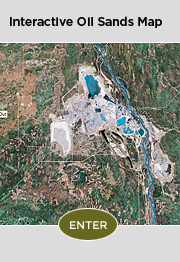If The Oil Sands Are Canadian, Why Do Americans Care?
The American Petroleum Institute Launches Oil Sands Campaign Highlighting Role Of Oil Sands In The U.S. Economy
Our neighbours to the south understand the importance of Canada’s oil sands and the value it adds to their economic and energy security. This is the reason the American Petroleum Institute (API), launched an oil sands campaign highlighting the role of the industry in North America’s energy security, economic growth and American jobs.
API represents more than 400 oil and natural gas companies and since 2000, has invested nearly $2 trillion in U.S. capital projects to advance all forms of energy, including alternatives, while reducing the industry’s environmental footprint. Now, they are backing the oil sands as an important part of America’s energy supply.
“API is expanding its education outreach on the importance of oil sands to the energy mix critical to America’s economic future,” said Cindy Schild, API’s refining issues manager. “Canada’s reserves are second only to Saudi Arabia’s and continuing to utilize this vast natural resource has enormous job creating potential and economic importance for America.”
“Most Americans don’t realize that Canada is our number one source of imported oil and that makes it difficult to appreciate the benefits oil sands are already providing to U.S. consumers and workers,” she said.
Canada is the largest supplier of oil to the U.S., an estimated two million barrels flow over the U.S. border every day, and about half of it is derived from the oil sands.
But the benefits don’t stop with energy security. Oil sands demand for American companies’ goods and services currently contributes to thousands of jobs. Over the next five years, oil sands production could create an estimated 343,000 new jobs in the U.S.
Companies like Caterpillar in Peoria and Bucyrus Erie in Milwaukee are familiar names to those working in the Athabasca region, but there are hundreds of vendors with thousands of employees who are equally important to oil sands operations – and who are also benefitting from the synergistic relationship that has developed.
API’s campaign will help ensure that Americans are aware of the benefits the oil sands production brings – especially in this time of economic uncertainty. The kickoff of the campaign began in January.
More information on oil sands is available at www.oilsandsdevelopers.ca or visit the American Petroleum Institute for more details on how the oil sands are benefitting the United States.




















